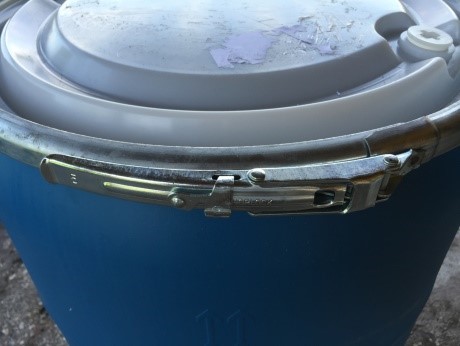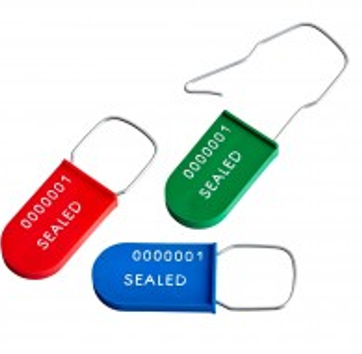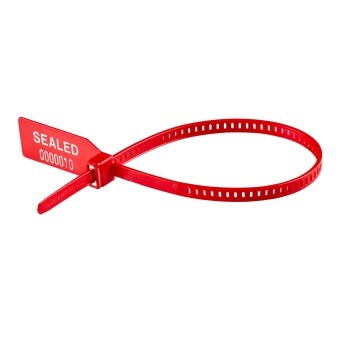SECURING BULK DRUMS & THE SEALS USED
Posted by AC&M
Bulk drums of both liquid and dry products are commonly sealed to detect unauthorized opening.
Drums of consumable liquids like juices and spirits, plus both dry and liquid food products and additives are secured to assure purity, by detecting tampering or opening. Many chemicals, pharmaceuticals and other industrial or agricultural bulk products are also sealed for the same reasons. All common drum types; metal, plastic, and fiber, are available with sealing rings that allow the use of a tamper evident seal when closed.
The higher the value or safety risk that a product poses, the more likely it is to be sealed. So security seals are especially needed if the contents of a drum are hazardous, or made for human consumption, or of high commercial value. Any of these types of products are at risk in transit and storage. Also these same high risk or high value products need to be identified. A seal can provide enhanced and rapid identification information.
AC&M makes a wide range of seals that are used to seal bulk drums and liners for drums.
One common among these is the PSW97 Plastic and Wire Security Seal. This patented seal is secured by passing the wire through the slot in a locking ring similar to the ring shown in the photo.

Then it is inserted through the holes in the seal and pulled to approximately ½-inch from fully tight. Once in place it is locked by hand. The stainless steel plunger is pushed into the seal body, drawing the wire further inside until a distinct “click” is heard. Then the seal is secure and the wire must be cut to remove it. Any attempt to open it by force or tampering will leave visible evidence.
A plastic pull up seal is sometimes used in this type of locking system. But often the plastic seal will not fit through the hole, and some ring locks can potentially cut a plastic seal.
The popular alternative to a wire seal is a padlock type seal like AC&M models 8001 or XPC-2 which are plastic with a wire hasp. A stronger alternative is the metal type WP101 which is used when plastic will not withstand the conditions. These classic seal designs are widely used in sealing a range of locking systems. Uses go back almost a century for the metal seals while plastic padlock seals have evolved from basic translucent plastic with galvanize wire to new acrylic jacketed seals with bar codes and stainless hasps. The simple locking hasp is inserted and is securely held in lock position until the hasp is cut or broken off. The steel hasp can be made for removal with a cutting tool or with a notch (scored) so they can be removed without tools. The notched hasp must be bent by hand firmly, to break.
Using a padlock type seal requires a locking ring with a hole large enough to accept the bent locking end of the wire hasp, as shown in this photo:

PLASTIC STRAP SEALS FOR DRUM LINERS -- SECONDARY SEALING
Drums with plastic liners of dry materials must be closed with some type of tie. This provides an opportunity for “secondary sealing” which can be done with a plastic strap seal. The secondary seal can serve as backup in case of accidental breakage of the outside seal. It will verify the contents were not accessed and can still be used. These 2 seals are also widely used on bags. There are 3 popular seals for this application.
AC&M produces 2 unique seals that can be used to secure a drum liner in the same way. Model PS-360 and DTZIP are both available with gripping teeth to hold the seal from slipping while closed around the liner. Or they can be supplied without teeth (NT for no teeth) providing a smooth band and will not tear material that might be damaged or create leaks from the gripping teeth.
DTZIP is the longer and stronger of these two seals, and has more printing or marking options. PS-360 is an excellent all-plastic seal, with a separate tab for securing a tag with print. This is especially useful when detailed information needs to be on the contents, or notations need to be added after sealing.

Nylon pull up seals (same as security wire ties) are popular for use with chemicals that are not compatible with poly seals. The larger mode BT4LH is a good fit for bag liners, and has a non-corroding stainless steel locking tab.
MULTIPLE OPTIONS AVAILABLE – AC&M CAN HELP
These are the most common methods for sealing drums and drum liners, but there are many specialty configurations and alternate solutions to fit custom applications.
If you have questions about our seals, or want information about using seals to seal bulk drums, bulk liners, or any containers please ask. AC&M serves many of the major food, chemical, industrial and agricultural businesses using drums around the world.
An experienced seal applications expert is available any time during business hours. Contact a seal specialist at our main office and factory: info@seals.com or call 1-800-342-0333 in the US or 516-349-7010 from anywhere.
Or see our website www.seals.com for sales and service locations outside the US.

